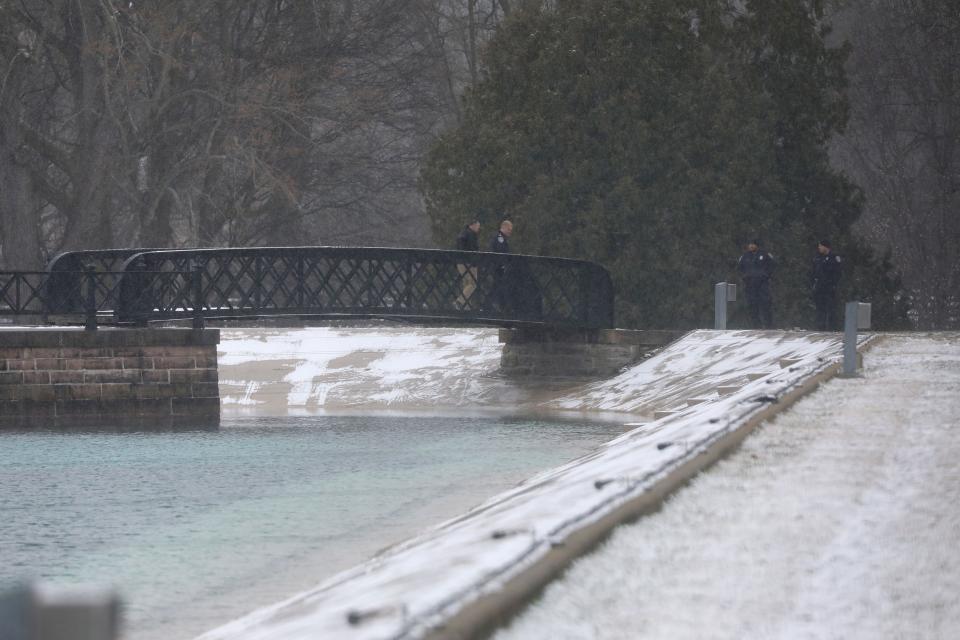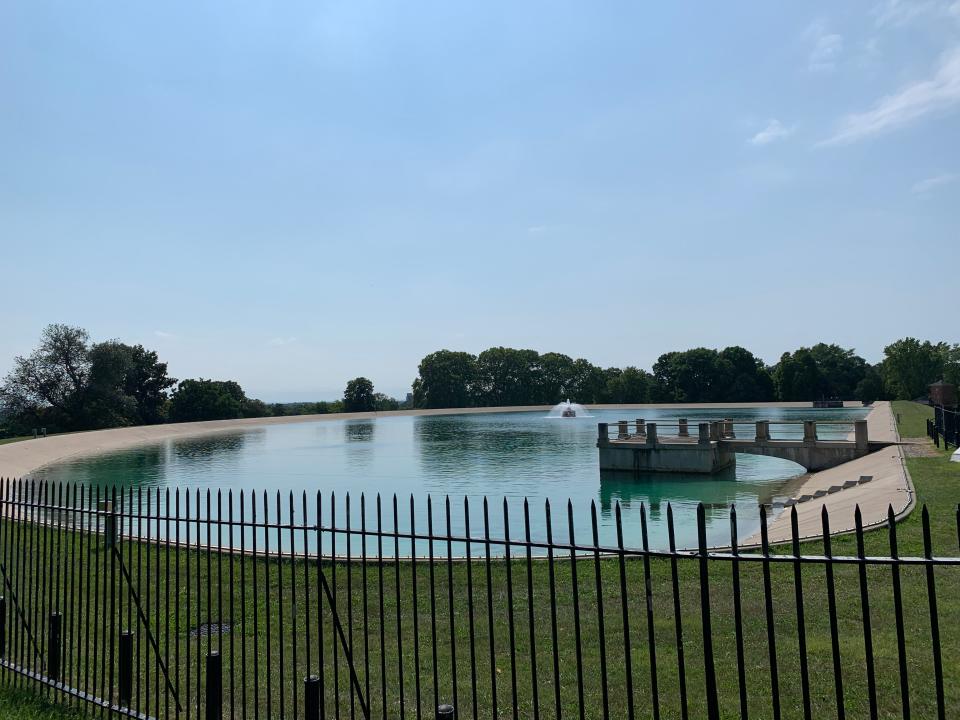Highland Park reservoir broke EPA rules. It was never covered for drinking water safety. Why?
Had the city enacted controversial plans to cover the Highland Park Reservoir would a body have been found in the water supply?
A dead person was found in the reservoir on Tuesday morning, prompting a Rochester Police Department recovery operation and boil water advisory in the area.
Very little prevents organic matter or a dying animal or a corpse from tainting one of the city's main water supplies.
Other cities have opted to cover their reservoirs so they are not contaminated. Some of the covers are heavy plastic liners that float.
A 2006 U.S. Environmental Protection Agency rule requires increased monitoring and treatment requirements to prevent contamination by covering the reservoir, building ultraviolet disinfection facilities or decommissioning the reservoir. The EPA rule applies to all public water systems in America with surface water or ground water influenced by surface water.
A city report from the time puts it clearly. This EPA move "forces the City to take one of three actions at each reservoir: 1) install a cover or water tank; 2) employ additional treatment at the outlet of each reservoir; or 3) abandon the reservoir."

The rule was made in response to cryptosporidium and other pathogenic microorganisms which are resistant to traditional disinfectants like chlorine. Cryptosporidium can cause gastrointestinal illness, which can be severe or fatal in those with compromised immune systems, according to the EPA.
Highland Park's reservoir holds water meant for your faucet that has already been treated. It is not treated at the city plant the same way again between the holding pool where the corpse was found and your tap, although it gets some chlorine as it leaves the reservoir, according to city documents.
"From the three reservoirs, water enters a complex grid (over 500 miles) of water mains that distribute the water to city homes and businesses," a Rochester public notice explained in 2006.
Why is Rochester drinking water open to the elements?
While municipalities were required to be in compliance or have a plan in place by 2009, the City of Rochester was given an extension until 2024 to be in compliance.
The city’s water is treated at a filtration plant in Hemlock, Livingston County, and pumped into the Rush, Cobb’s Hill and Highland Park reservoirs. The water is then disinfected again when leaving the reservoirs.
The Highland Park Reservoir has a capacity of 26 million gallons.
A 2012 agreement between the city, Monroe County Department of Health and New York State Department of Health requires twice monthly monitoring for cryptosporidium and giardia. Since 2012, the city has detected cryptosporidium or giardia four times in nearly 600 samples. Following the detections, the city collected additional samples and those follow-up samples did not detect either microorganism.
The microorganisms were not detected in any of the samples collected in the Highland Park or Cobbs Hill reservoirs in 2022, the last available year for the city’s water quality report available online.
The Highland Park Reservoir, located in a heavily-used park, did test positive for giardia in 2007, possibly the result of a large number of ducks on the water. A subsequent sample of the reservoir water tested negative.
There was also two-day boil-water advisory for homes near the Cobb’s Hill Reservoir in September 2006 as a result of e.coli bacteria contamination, believed to originate from seagulls that congregate at the reservoir.

More by Steve Howe: Does the warm winter mean we will see mosquitoes earlier in NY?
No evidence that Rochester ever complied with EPA rule
The City of Rochester responded to questions from the Democrat and Chronicle on Wednesday, outlining the timeline of extensions and projects connected to compliance with the EPA rule.
The most recent movement was in February, when the Rochester City Council approved a professional services agreement of up to $650,000 with Colliers Engineering & Design for cost estimates, conceptual planning and other preliminary analysis on the Highland Reservoir compliance project, which has a deadline of Nov. 30, 2029.
Norm Jones, the city’s Commissioner of Environmental Services from 2014 to 2021, said the department was working diligently toward a resolution for the reservoirs during his tenure but got delayed in 2021 when the EPA revised an important regulation around lead and copper in water systems.
“That made it necessary for us to do more analysis,” Jones said. “We were being very structured and methodical in our steps to how we dealt with it, (and) that changed the time frame.”
Those new EPA regulations place an emphasis on the use of orthophosphate to reduce lead in drinking water, but is incompatible with open water reservoirs as it can encourage algae growth.
The city was granted an extension in its agreement with the state and county health departments to complete a corrosion control study, which is now in the testing phase. The study findings will inform the decision on the EPA rule for surface water reservoirs, commonly known as LT2.
“If the City were required to use orthophosphate in its drinking water for the control of lead, open reservoirs with Ultraviolet light disinfection would no longer be a viable option for LT2 compliance,” a statement from the city said.
To date, the city has expended $347,899 on the Highland Park Reservoir compliance project.
— Reporter Justin Murphy contributed to this report.
— Steve Howe covers weather, climate and lake issues for the Democrat and Chronicle and his least favorite part of summer is mosquito bites. Have any insight into Rochester weather? Share with him at showe@gannett.com.
This article originally appeared on Rochester Democrat and Chronicle: Highland Park reservoir broke rules meant to protect drinking water

